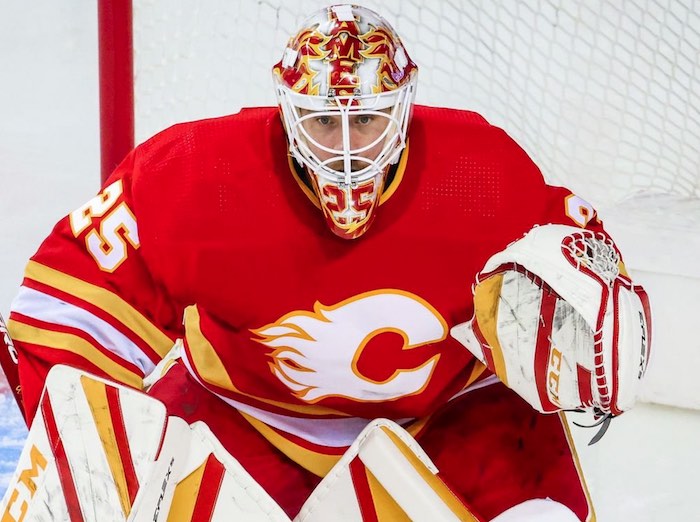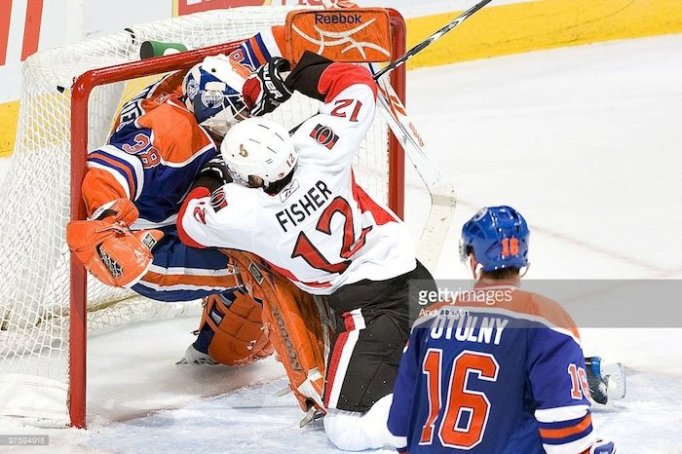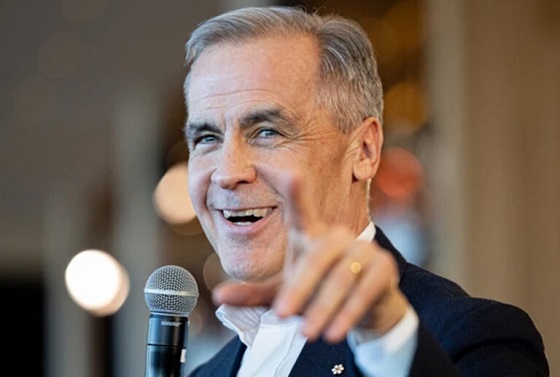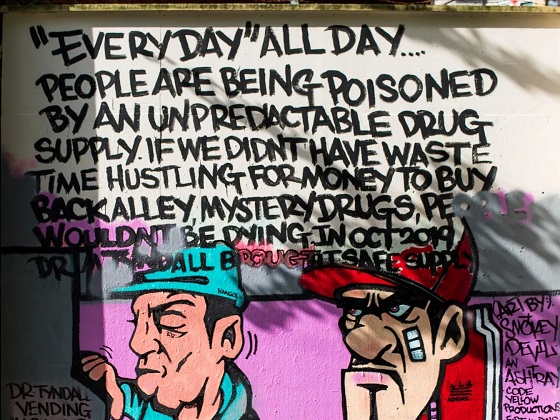Bruce Dowbiggin
We Have Met The Goalies, And The Goalies Have Won

The NHL’s problem, Boston Bruins GM legend Harry Sinden told us years ago, is that there are 30 teams. But just one Stanley Cup. That makes for a lot of disappointment.
As Toronto fans can now attest, that disappointment stings worst when you have a team with a likely Hart Trophy winner and an impressive regular season. By rights a healthy Leafs squad should have disposed of the defending champions from Tampa Bay, who finished five points below them in the standings.
But the NHL is no place for favourites. Analytics have found that, generally, you’d have to play a best-of-51 series before the higher-seeded NHL team would have the advantage. (The NBA is much more favourable to the chalk.) So, given enough time Toronto would have outlasted the Lightning. It could/ would have taken till August to do so, however.
Why? Because the NHL— despite fitful attempts to redress this discrepancy— has created a Frankenstein playoff model that allows lesser teams to clog the ice, funnel shots from bad angles and get away with fouls that wouldn’t stand in the regular season. Using the rules today, a defensive-minded team can clog the front of the net, blocking as many shots as does their goalie.
In Toronto’s Game 7 loss to Tampa, the Leafs directed 57 shots at impenetrable goalie Andrei Vasilevsky. He stopped 30 of 31 that reached him. His defence almost matched him, blocking 26 shots. (Toronto blocked 13 shots while goalie Campbell stopped 20 of 22 shots that rewashed him.)
Toronto buzzed the scoring zone, dominating puck possession. They dominated faceoffs, winning 61.8 percent. In the end it meant zilch, be cause Vasilevsky was a brick wall.
It was the same for the Pacific Conference champion Calgary Flames against 23-year-old goalie Jake Oettinger and the Dallas Stars— who only snuck over .500 on the final day of the season. In Game 7 Calgary sent 129 shots toward the net, with Oettinger making 64 saves into OT. And his defence blocked 32 Calgary shots on Sunday.
On average the Flames outshot the Stars (272 shots) by over 20 shots in each of the seven games. Yet the lower-rated Dallas almost escaped with the series win, because Oettinger was otherworldly. It took a bad-angle goal from Johnny Gaudreau in OT to propel the favoured Flames to a Round 2 Battle of Alberta with Edmonton.

The NHL shows no inclination to reward hight-ranked teams, preferring to lionize the grinders and bangers by letting them hit opponents late and charging guys along the boards. If there were a goal that epitomized this credo it has to be Gm.4 of the Kings/ Oilers series when Carl Grundstrom slid on his belly into goalie Mike Smith, pushing the puck under the Oilers goalie with a two-handed shove. Ugly? Yes, but effective against the massive goalies.
Of course, what are scorers to do when faced with 6-foot-5 goalies like Smith and his towering peers blotting out the sun? The epidemic of skilled giants wearing huge equipment has led to teams not shooting till they can screen the goalie or knock in a rebound. It was something we wrote about in February of 2021 following publication of an article by Ken Dryden in The Atlantic entitled “Hockey Has a Gigantic-Goalie Problem”.

“The problem isn’t the game. The problem is the goalie, who is changing the game”, declared Dryden. “This game, one that allows for such speed and grace, one that has so much open ice, is now utterly congested… Never in hockey’s history has a tail so wagged the dog.”
Dryden reviews the evolution of the position from goalies’ bodies protruding above the cross bar to having their entire body below it. “Pads that had been made of heavy leather, deer hair, and felt were replaced with nylon, plastic, and foam rubber. These lighter materials, which made the pads less awkward to move around in and less tiring to wear, could then also be made bigger. And bigger equipment, covering a body now in position below the bar, filled even more space.”
Dryden explains how a properly positioned 6-foot-3 or taller goalie can now block all avenues for the puck— from his knees. “But really, in that equipment, with those body strategies, why get up? Why move? What better puck-blocking position could he take?”
The response from coaches and shooters? “Rush the net with multiple offensive players, multiple defensive players will go with them, multiple arms, legs, and bodies will jostle in front of the goalie, and the remaining shooters, distant from the net, will fire away hoping to thread the needle, hoping the goalie doesn’t see the needle being threaded, because if he does, he’ll stop it
It’s not a formula Dryden likes. “All the players’ amazing skills, developed in hours of practice, visualizing and dreaming in basements, on roads and local rinks, in drills with coaches and expert teachers, their minds and hands now able to move as fast as their feet, to find and use all the open ice that is there. But with so little open ice where open ice matters, for what?”
He contrasts how basketball solved its size problem: introducing the three-point line to open up scoring in what was becoming a stalemate beneath the hoop. “If a big guy can’t pass and shoot, there’s no place for him. With big guys dispersed and away from the basket, little guys now even get rebounds. All 10 players are involved. All 10 players can have a role. All 10 players, on the best teams, and on even better teams in the future, need to have a role to win. This NBA game, played on a much smaller surface than a hockey rink, is now far more open, much less congested.”
Dryden’s solution is a reluctant one. “The clever cat-and-mouse game between goalies and shooters has run its constructive course. The goalies, by winning, have changed the game.” So the net must be made bigger. “Maybe only six inches or a foot wider, maybe only six inches higher. And only for those in junior and college leagues and above.”
Whether the NHL can see beyond its cherished myths of grinders and role players to admit it has a problem is the question. A question that, as long as Gary Bettman is commissioner, will never be answered.
Bruce Dowbiggin @dowbboy is the editor of Not The Public Broadcaster (http://www.notthepublicbroadcaster.com). The best-selling author was nominated for the BBN Business Book award of 2020 for Personal Account with Tony Comper. A two-time winner of the Gemini Award as Canada’s top television sports broadcaster, he’s also a regular contributor to Sirius XM Canada Talks Ch. 167. His new book with his son Evan Inexact Science: The Six Most Compelling Draft Years In NHL History is now available on http://brucedowbigginbooks.ca/book-personalaccount.aspx
2025 Federal Election
Trump Has Driven Canadians Crazy. This Is How Crazy.

“Liberalism is based on one central desire: to look cool in front of others in order to get love. Preaching tolerance makes you look cooler than saying something like, ‘Please lower my taxes.’”— Greg Gutfeld
Having lived 25 years in the West after 45+ years in the East we can now generalize on the state of the nation. In the West the attitude is to grasp the future. Not fear it. Accept risk and loss as partners. In the East the default sentiment is to fear the future. Think of every reason why it might fail.
Quebec fears losing its culture. Ontario fears losing its power. The Maritimes fear losing equalization money. Hence Danielle Smith and Doug Ford as contrasting symbols of leadership. But 2025 is something new.
Donald Trump’s unsparing assessments of modern Canada— “We don’t really want Canada to make cars for us, to put it bluntly. We want to make our own cars — and we’re now equipped to do that”— have exposed this fissure in the country. Is it him or is it us? Families and friendships are being destroyed by the response. As Canadians head to the polls it’s obvious that persuasion is not going to apply in this climate. Arguments are falling on deaf ears.
With a large segment of the population doubling down on a failed past it’s time to make an I-told-you list of the implications of letting Donald Trump scare you into voting for a re-run of the Liberal Party. Double this dread if the Liberals get a majority.
To those Boomers living off the equity in their paid-off homes, get ready to be taxed on the appreciation in your homes. While you cherish your stand-alone private residence, get ready for the neighbours to sell out to someone who will erect a six-storey, 36-unit condo on the property right next to you because “sustainable growth”.
Got someone under 50 in your life? The Carney Reflex is bad news. Adding debt and embracing the destructive Trudeau social positions is a killer for those looking to commit to a future in Canada. Should Poilievre lose the election and his seat expect a brain drain away from the failed state. And the prosperity they create to vacate as well.
To those who cherish free expression expect hate-speech laws like those in UK where police will arrest you in your homes for social-media comment hostile to the ruling Party. And even if you shut down your posts watch out for neighbours who will exploit snitch lines to get you out of the hood.

Buttressing the party line, Carney will restore CBC’s funding— and then some— to drown out any social media pointing out the indelicate facts about his Trudeau-sourced cabinet members. He’ll also keep propping up failing private media, preventing them from bankruptcy so long as they spew DEI 24/7/365.
For those who cried fake tears over the Rez school graves scandal, watch Liberals pass legislation that gives unelected leaders of indigenous communities veto power over development of Crown Lands. Expect the Liberals, trying to maintain the NDP vote they assumed this year, to resurrect the “genocide” label against Canadians and fly flags at half mast again.

If you hoped to get to the bottom of innumerable scandals on the Liberals watch— ranging from eco-theft to China infiltration— Carney will put the clamps on any inquiry. The steady stream of Canada’s wealth to third-world kleptocrats will become a flood.
To those who thought Mark Carney had cancelled the consumer carbon tax, prepare yourself to find out that he just reduced it and will come back full-throttle as soon as the Conservatives fire Pierre Poilievre. While Carney plays the Housing Saviour he will also use the Carbon Tax to make concrete and fertilizer way more expensive, thus boosting the cost of the 50,000 homes he will never build and farm land will go fallow.
With CPC out of the way, expect no significant moves to end Canada as the money laundering capital of the world, the global fentanyl hub, international home to organized crime heads and a reported 1 in 7,800 residents as members of organized crime.
Batten down the hatches as Carney’s Liberals use their mandate to maintain the immigration deluge, thereby destroying Canada’s support systems for health, infrastructure and burying western values.

Get set for all your fossil-fuelled vehicles and heating to be taxed into oblivion with the proceeds going to more bike lanes, clogged public transportation on unreliable electric vehicles. Expect listening to obnoxious Quebec politicians brag on their “clean” hydro power.
Speaking of vehicles, the Sheila Copps set mocked Poilievre’s vision of urban hell where cops tell you not to protect your goods in a home smash-and-grab or car-jacking. With police ceding the field to organized gangs it will be open season as courts and the Liberals abandon the middle class to obey DEI imperatives.
And most of all, welcome to a full-fledged constitutional crisis sparked by Alberta and Quebec that will make the 1980s federal/ provincial rumbles look like Sunday school. Both will seek referendums from their voters on sovereignty or some equivalent. As we suggested last month the best case could be the UK model of regional parliaments. Saskatchewan and Alberta could join with indigenous communities to demand a regional say on how their revenues are distributed. Expect purchased media to humble brag for the ruling Liberals.

The worst outcome of Carney as PM is Alberta gaining independence or, gasp, joining America. Because Quebec can never get a better deal outside Canada expect them to use any momentum on sovereignty to extort further concessions from what’s left of Canada.
But why believe us? According to the report released in early 2025 by Policy Horizons Canada — the Government of Canada’s in-house think tank— upward social mobility could become a relic of the past, with wealth and opportunity increasingly inherited rather than earned. Their scenario outlines a country where rising inequality, inaccessible housing, and a broken promise of meritocracy leave younger generations disillusioned, disconnected, and doubtful that effort alone can improve their lives.
So with scant days left in the campaign the problem for Conservatives is not that the Liberal base believes Carney and their heroes. They’ve seen enough to know Mr. Burns is a fraud. But with their #TDS the true believers will never admit to backing a lying, losing hype train. That would be like death to them. So they’re closing their eyes and hoping it will all be over soon and they can go back to Mr. Dressup. Just know their kids will never forgive them.
Bruce Dowbiggin @dowbboy is the editor of Not The Public Broadcaster A two-time winner of the Gemini Award as Canada’s top television sports broadcaster. His new book Deal With It: The Trades That Stunned The NHL And Changed Hockey is now available on Amazon. Inexact Science: The Six Most Compelling Draft Years In NHL History, his previous book with his son Evan, was voted the seventh-best professional hockey book of all time by bookauthority.org. You can see all his books at brucedowbigginbooks.ca.
2025 Federal Election
How Canada’s Mainstream Media Lost the Public Trust

Breaking: CBC News admits that host Rosemary Barton was wrong on April 16 when she said “remains of indigenous children” have been discovered.
Call it the Panic Election. From The Handmaid’s Tale to Quebec alienation to plastic straws, the dynamic is citizens being stampeded in a brief six weeks by Big Brother. (There’s no Big Sister. That would mess with the narrative.) Prompting Covid Part Deux from the Laurentian media scolds.
Nowhere is this panic more keen than among aging Boomers who’ve pronounced themselves willing to ignore a decade of Justin Trudeau’s clumsy, unethical and sometimes criminal behaviour in the wake of Big Bad Trump. Even the threat of losing the country’s AAA credit rating can’t sway them from full-throated panic about being the 51st state.
The 51st state gambit is the window dressing. The real Trump panic is over him exposing the inadequacies of a Canadian society penetrated by China, dominated by globalist fanatics and more indebted every day. Specifically, Trump labelled Canadians defence dead-beats and entitled snobs who’d be crazy not to join the U.S. The insulting Trump framing has been a lifeline to those most recently in office— Liberals— to point at the Big Bad Wolf outside the door rather than the Frozen Venezuela inside its walls.
Integral to this panic is the role of Canada’s legacy media, a self-serving caste saved from bankruptcy (for now) by generous wads of public money. The 416/613 bubble ponies operate as if it were still 1985, not 2025. They’ve managed to preserve their status while society changed around them. For instance, CBC’s flagship At Issue panel features three people from Toronto and a fourth from Montreal.
It has worked perfectly in Boomer Canada. Until this past week, when the media guardians finally lost the plot. The combination of TV panel hubris and the incompetence of the Elections Commission exposed an industry more interesting in protecting its own turf than protecting the truth.
The meltdown was the notion that conservative social media— with its intrusive reporters and tabloid tactics— had no place in their sandbox. This hissy fit came after Wednesday’s French debate. Members of Rebel News, True North and other outfits dominated the party leaders’ scrums with obtrusive questions about Mark Carney’s opinions on same-sex sports and what constitutes a woman— questions the French moderator had neglected to ask.

For legacy reporters and hosts who take it as given that they be allowed the front pew this was an affront to their status. As purveyors of the one true political religion the talking heads on CBC, CTV and Global began speaking of “so-called journalists” and “far-right” intruders elbowing into their territory. Their resentment was all-consuming.
This resentment spilled into Debate Night Two when a shouting match ensued in the press room. A CBC source claimed (incorrectly) that Rebel Media leader Ezra Levant had been barred from the press room. A writer from the Hill Times screamed at members of their raucous rivals. The carefully chose panelists suggested that these outfits were funded by dark right-wing sources.
Before the debate had ended Elections Commission organizers— reportedly goaded by the Liberals— called off the post-debate scrum citing “safety” issues that seemingly included a Rebel reporter conducting a hostile walking interview with a furious Liberal official. This unleashed another torrent of Media Party vitriol about its position as the keepers of Canadian journalism.

In a show of irony, these complaints about right-wing misinformation came from people whose livelihood is dependent on Liberal slush funds or whose organizations have accepted government funds to stave off bankruptcy or whose union is an active shill for non-Conservative parties. The conflicts are never mentioned in the unctuous festival of privilege.
What makes this rearguard action against new media risible was the 2024 U.S. election where Donald Trump acknowledged the new day and rode the support of non-traditional media back to the presidency. His shunning of the legacy networks and hallowed print brands heralded a new reality in American elections. Poilievre has struggled to find this community in Canada, but for those with eyes it remains the future of disseminating political thought.
A perfect example of alternative media scooping the tenured mob on Parliament Hill has been the sterling work on China by Sam Cooper, a former Global employee who has independently demonstrated the ties between Chinese criminal gangs and the Canadian political structure going back to the 1980s. Working with others outside the grid he’s shown the scandal of a Liberal candidate urging Chinese Canadian voters to reap a bounty for turning his Conservative opponent to the Chinese Communist Party. A disgrace that Carney has forgiven.
Predictably Cooper’s work and the independent story by two retired RCMP investigators who implicated nine Liberal cabinet members in compliance with the Chinese communists has gotten the ‘tish-tish” from the Laurentian elites. Like the Democrats who buried the Hunter Biden laptop story to save his father in the dying days of the 2020 U.S. election the poodle media hope to delay the truths about China long enough to get the compliant Carney over the finish line.
For contrast to how it was— and could be— one only had to witness the moderator performance of journalist Steve Paikin of TVO. Largely unknown outside Ontario, Paikin overcame the skepticism of Westerners by playing it straight down the middle. Such was his honest-broker performance that Poilievre was heard telling him after the debate that he had no idea how Paikin might vote. (Ed. note: Paikin is a former colleague and longtime friend.) In other words, it’s still possible.
It’s a cliché that this election is a hinge point for Canada. Will it face itself in the mirror or indulge in more denialism about its true self? No wonder unaffiliated journalists joke that their stories today will be the lead on mainstream media in three months. Carney has promised to continue bribing the mainstream media, but their day is done. It’s simply a matter of fixing a date for the next panic.
Bruce Dowbiggin @dowbboy is the editor of Not The Public Broadcaster A two-time winner of the Gemini Award as Canada’s top television sports broadcaster. His new book Deal With It: The Trades That Stunned The NHL And Changed Hockey is now available on Amazon. Inexact Science: The Six Most Compelling Draft Years In NHL History, his previous book with his son Evan, was voted the seventh-best professional hockey book of all time by bookauthority.org. You can see all his books at brucedowbigginbooks.ca.
-

 Business2 days ago
Business2 days agoIs Government Inflation Reporting Accurate?
-

 2025 Federal Election2 days ago
2025 Federal Election2 days agoCarney’s Hidden Climate Finance Agenda
-

 2025 Federal Election2 days ago
2025 Federal Election2 days agoWhen it comes to pipelines, Carney’s words flow both ways
-

 2025 Federal Election2 days ago
2025 Federal Election2 days agoStudy links B.C.’s drug policies to more overdoses, but researchers urge caution
-

 2025 Federal Election2 days ago
2025 Federal Election2 days agoPolls say Canadians will give Trump what he wants, a Carney victory.
-

 2025 Federal Election2 days ago
2025 Federal Election2 days agoPoilievre’s Conservatives promise to repeal policy allowing male criminals in female jails
-

 2025 Federal Election2 days ago
2025 Federal Election2 days agoCarney Liberals pledge to follow ‘gender-based goals analysis’ in all government policy
-

 2025 Federal Election2 days ago
2025 Federal Election2 days agoTrump Has Driven Canadians Crazy. This Is How Crazy.




